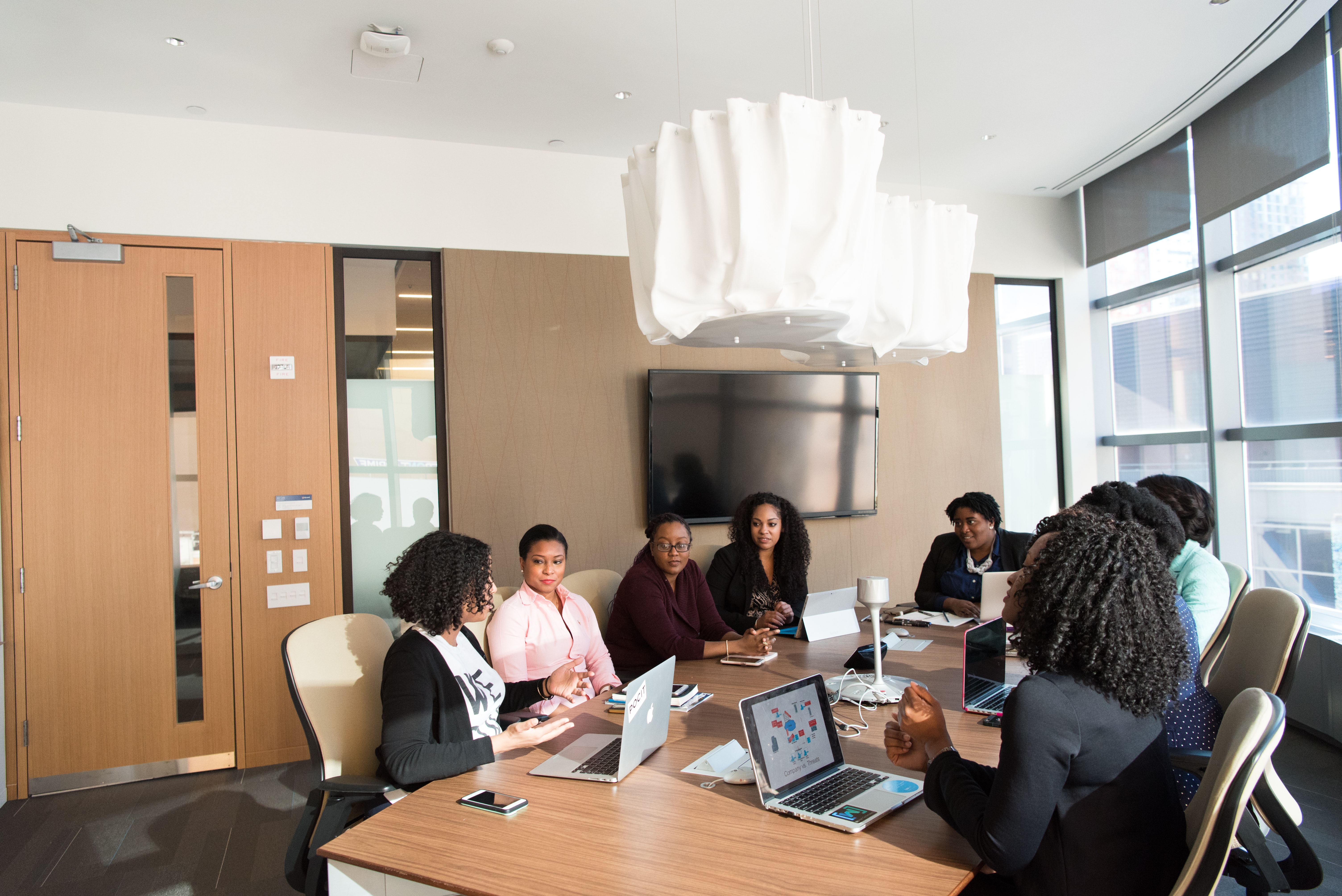If you’re an introvert, meetings can feel like warzones in which your main goal is to duck extroverted bullets while the loudest personalities exchange fire. So how do you do yourself justice in such a meeting instead of getting talked over and experiencing severe social anxiety? Here is the LSW guide for how to claim your space, find your voice and ultimately having a productive meeting.
1. Prepare
We’ve said it before and we’ll likely keep saying it to our clients: preparation is crucial, even for the most confident speakers. It can make the difference between a disorientating meeting and one in which you feel clear.
Get precise as to what you want the outcome of the meeting to be. Then make a list of what you want to add to the formal schedule. Order your points on paper, outlining a problem, your solution and an action plan. If this is a regular meeting, bring your notes up from the most recent one, and make sure actions have all been addressed. All of this makes you come across as prepared and polished. Even if the rest of the meeting is chaotic, you will be able to inject this clarity into the fray. Prepare for any challenges that people might raise and plan your responses. Finish by asking for input or questions to prompt buy-in and productive discussion.
2. Harness your vocal and physical delivery
Your delivery is the packaging your ideas are wrapped in. If you are handing someone precious jewellery, you are unlikely to wrap it in old newspaper and parcel tape. But when someone receives a beautiful box with a ribbon they anticipate something valuable inside. Working on your vocal and physical delivery helps others to handle your ideas with the interest they deserve.
Tip #1 - Pause
Don’t rush what you have to say. If you speak steadily, you’ll find you’re able to think as you go and your ideas will come out more clearly and succinctly, rather than a bumbling trail of thoughts. If others seem impatient to speak, don’t stop or hurry to finish – what they have to say is no more important than your ideas.
Tip #2 - Body language is key
Nonverbal communication is invaluable in meetings - even when it's virtual. A powerful position can help you get into the right headspace and reduce that uneasy feeling. We have a connection tool that helps you become aware of how you are sitting and adjust accordingly. If you have a habit of keeping your body closed, shift to a more relaxed posture, or go bigger. To avoid stage fright, imagine you’re wearing a power suit with shoulder pads. Project your energy outwards rather than inwards so that you own the space you have been given. Start with your hands in line with your navel rather than hanging loosely by your sides, so that hand gestures feel less awkward and unnatural.
Tip #3 - Smile!
Smiling and making eye contact can go a long way to creating connection with those listening. That doesn’t mean you have to force a smile – in fact, that can cause the opposite effect. But even letting your eyes be warm and receptive can create the connection you need. This TED Talk explores the idea that there is no reason to learn to show you are paying attention, if you are in fact paying attention.
3. Listen actively
Active listening makes people notice you long before you say a word – not because you’re attention-seeking, but purely because you are participating as a listener. This will put you at ease and make you feel like your voice could and should be heard.
Active listening can be as simple as nodding when you agree, making notes when you have ideas and – never underestimate it – making eye contact. Participating like this builds your presence in the room (or Zoom call), it’s a subtle energetic layer that makes people more likely to stop and listen when you do open your mouth.
When you listen to people actively they will be inclined to listen to you. They likely won’t notice this consciously; they’ll only know they want to pay attention to you.
Beyond that, you’ll find active listening (with an open heart and mind) sparks your own ideas. When you come to a meeting unclear on what you want to say, your engagement with others will give space for your own thoughts to formulate.
4. Claim your space
Dominant personalities can derail even the best ideas, just by interrupting. Even if you retort, the temptation can be to snap or react in a way that distracts people from the idea you were originally delivering – or worse, triggers a full-blown conflict. The good news is that you don’t have to fight fire with fire – there is another option.
Let’s imagine someone has just interrupted you. A bunch of distracting voices have just crowded your head – possibly accusing you of not being good enough, possibly a string of expletives aimed at your newly formed opponent. This is not the time to brood on those voices.
.jpg?width=500&name=christina-wocintechchat-com-lqPLmYD_MO8-unsplash%20(2).jpg)
How to deal with interruptions in meetings:
1. Let them talk for a bit
Interrupting involves an adrenalin hit and you need to let that release before jumping to take the baton back. Otherwise you can have all out war on your hands. Or they will still be so full with the enthusiasm that led to the interruption, they won’t even notice you speaking.
2. Address them directly
After a few seconds, you want to stop them, this could be by saying ‘excuse me’ but actually the most powerful device is saying their name. After all you can’t be more personalised than your own name, right? It’s guaranteed to make for the most effective disrupter that their ears could pick up.
3. Pause
It's now time to hold the silence for a moment. Don’t rush back into what you were saying. The moments pause takes back ownership of the space. Everyone’s attention and energy will settle back on you. And you’ll have a moment to cool off.
4. Be clear
Now you have their attention - you get to make your request. I haven’t quite finished - would you mind? By making a request you stop this from being a public shaming or a telling off, and into an adult exchange - a clear request which they will find it difficult to say no to. They’ll also be less likely to interrupt you in future.
Really great meetings are about generosity, support and warmth. So any opportunity you have to create those qualities – even in the tough moments of an interruption – can help make the meeting a success. For more on this topic, read our blog - How To Deal With Interruptions At Work.
5. Interrupt with grace

What about when you need to interrupt someone else? This is a daunting prospect, but sometimes when dominant personalities are being – well – dominant, it’s difficult to get a word in edgeways. And sometimes you need to.
If you acknowledge what’s already been said, you can create connection and rapport even when interrupting.
An interruption that begins with, “That’s an interesting point…” or, “That’s a good angle…” shows you’ve been listening and paying attention. A listener will be much more receptive to hearing your point of view if you accept theirs first. Even the loudest person in the room might quieten down because you’ve complimented their idea.
A key here is don’t add the word ‘but’. That ruins the compliment and turns the positive connection sour. Just let the loud person have the compliment. It won’t hurt.
It's worth being aware that meeting interruptions can be especially challenging to manage in the virtual world, where Internet speeds and technical glitches have a part to play, so it can be hard to know when someone has finished speaking.
“One of my clients worked in finance in a very male-dominated environment. She would leave meetings without having said a word. Her manager told her they wanted to hear her ideas so she began receiving coaching from me at LSW. Our tools helped her to interrupt her male colleagues graciously and to overcome upspeak, which was making her sound uncertain. Her increased visibility helped her be placed on a project that she says might not have happened otherwise. Beforehand the perception of her was shy and quiet but now her potential is becoming clearer to those she works with." - Cat Clancy, LSW Coach
Meetings can be fertile grounds for growing ideas or they can be a thicket of thorns to extricate yourself from. The best meetings are worth fighting for – and they only happen when everyone’s voices are encouraged.
With the help of these practical communication tools for facilitating productive meetings, you will start seeing better decisions being made, exciting projects unravelling and an increased feeling of wellbeing and achievement to permeate the team. Trust us - the sweet spot can be reached!
If you're an introvert whose voice is waiting to be heard, book a free 15-minute Discovery Call to find out how we can help you become a confident, kind and impactful speaker.


